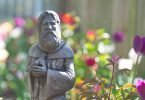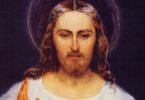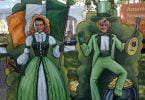
A 13th-century maple sculpture depicting Mary as the Throne of Wisdom is seen on permanent exhibit at The Met Cloisters, the branch of the Metropolitan Museum of Art in New York City dedicated to the art and architecture of medieval Europe. The feast of the Assumption of the Blessed Virgin Mary is celebrated Aug. 15. (CNS photo/Gregory A. Shemitz)
by Olivia Martin
This summer I’ve been attempting to read a book a week.
While I haven’t been completely successful, I have managed to page through quite a few, my favorite being “A Visit From the Goon Squad” by Jennifer Egan.
The novel tells the stories of a host of individuals whose lives are connected by the music industry.
Presenting the characters’ struggles, failures and daily actions, what struck me about this novel is how each character in his or her own way came to the question, “What next?” — and how they answered it.
Having spent their lives following their whims and immediate desires, the characters find themselves entrenched in middle-age without a clue of what it means to be an adult — but wanting to be one, nonetheless.
I find this fascinating and relevant especially — though perhaps not intuitively — in light of the Feast of the Assumption.
Until Christ walked the earth, never was there a human being more balanced, confident, mature and filled with purpose than the Virgin Mary.
Her gaze was continually fixed on following God, never failing to trust him — not because she didn’t have a choice, but because she had something unlike anything else in the world.
She had a relationship with the Holy Spirit — and that even made her trusting “yes” to being the mother of God the most reasonable thing in the world.
Mary was the epitome of an adult.
After Christ’s death, resurrection and ascension, the Virgin Mary remained on earth with the apostles. I imagine they must have looked to her often to find great comfort and direction.
But soon after she, too, was to be taken to heaven, body and soul.
I think the apostles must have asked the same questions as Egan’s characters: “What next?”
They chose to follow their desire to say “yes” to Christ’s invitation to follow him.
The apostles remained faithful to the origin of what changed their lives: Christ.
And they decided to become adults.
Though completely dysfunctional and imperfect, I found great hope in Egan’s characters.
They look a lot like my friends, family, and me. They look like the apostles.
They showed me that it’s really never too late to ask questions that matter and seek their answers.
And that gives me confidence that the quest for adulthood is indeed a glorious one, generated by and ending in Christ.






